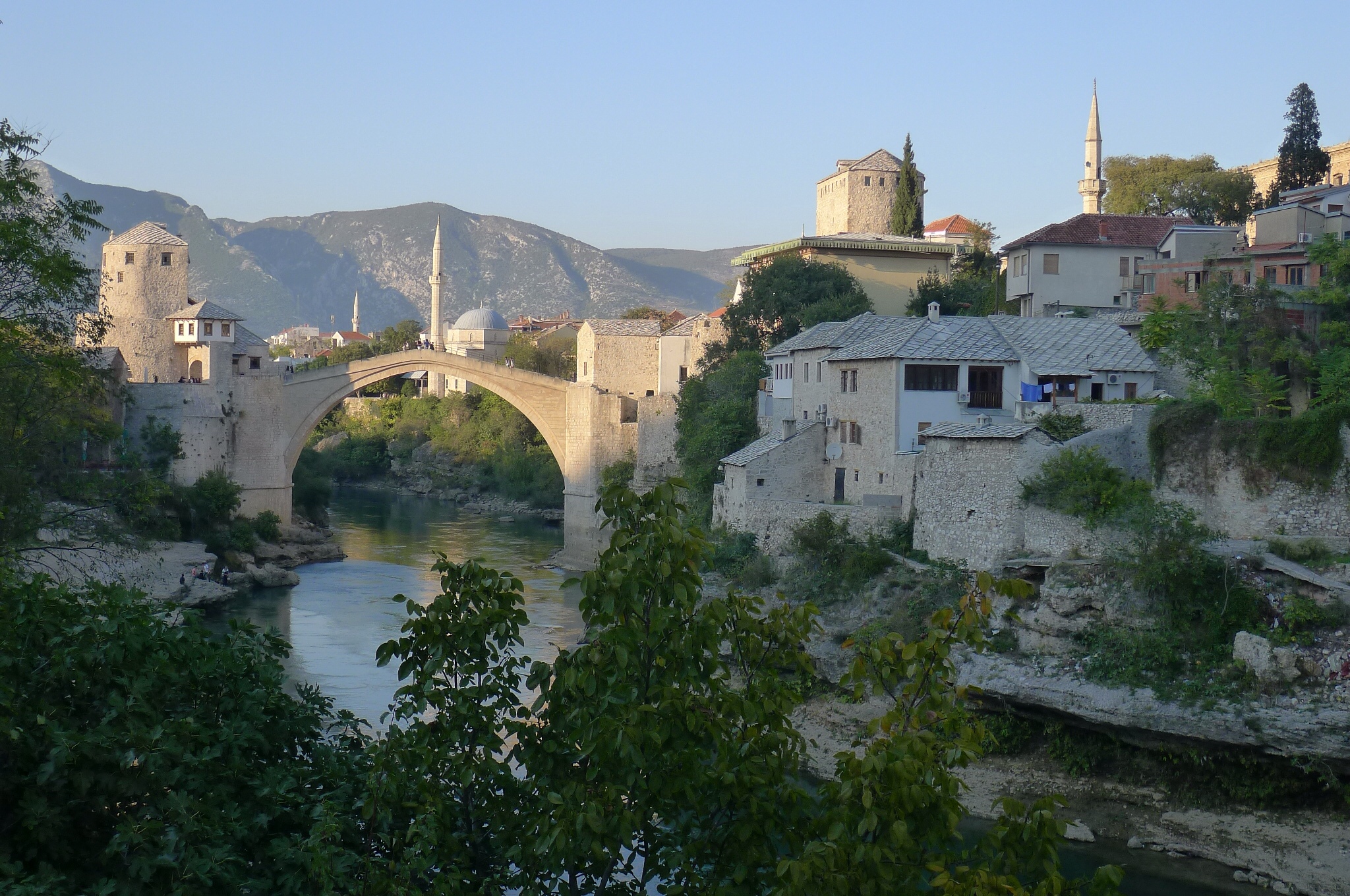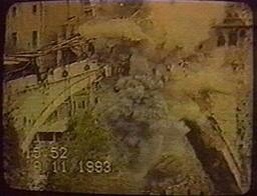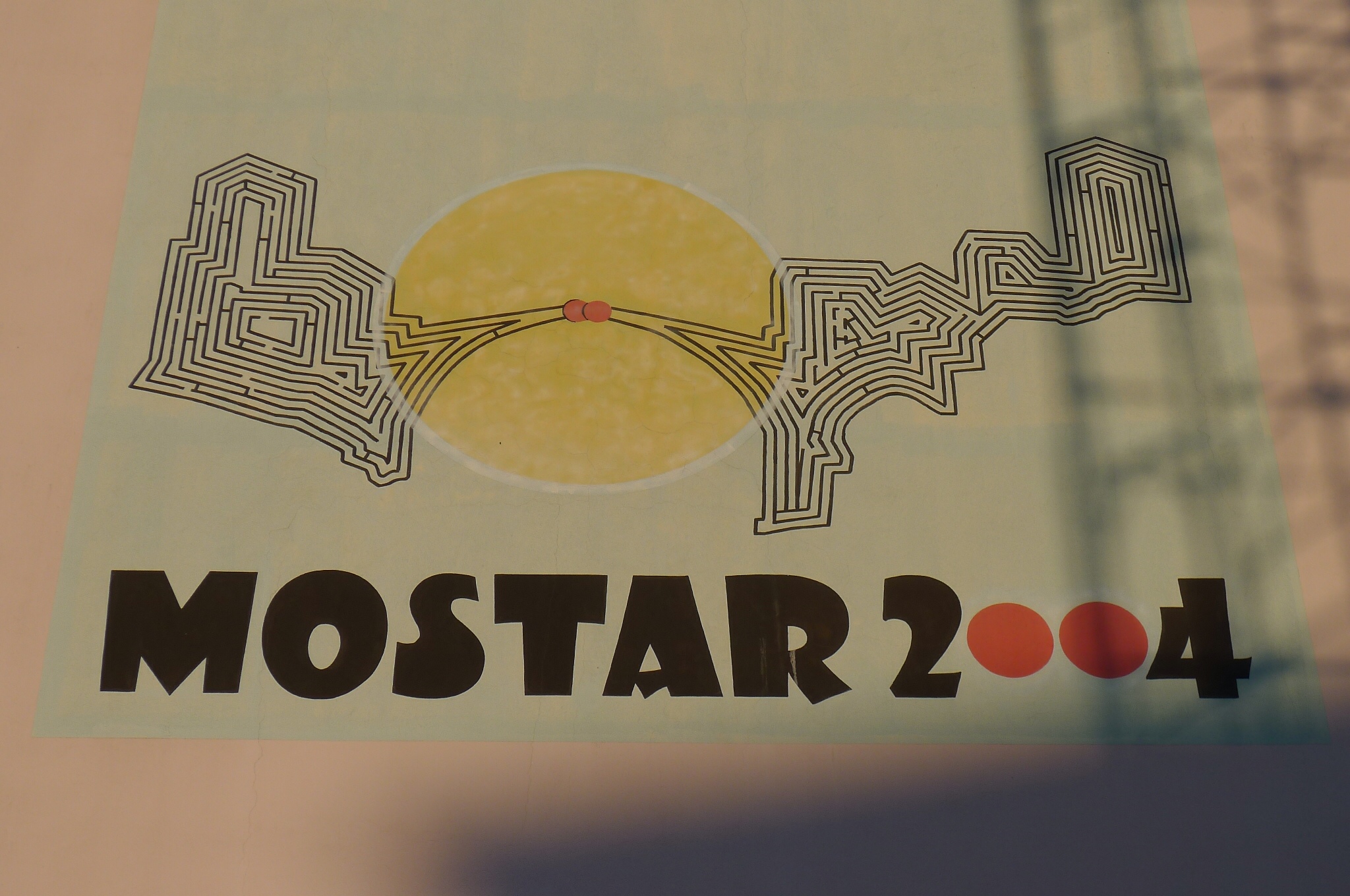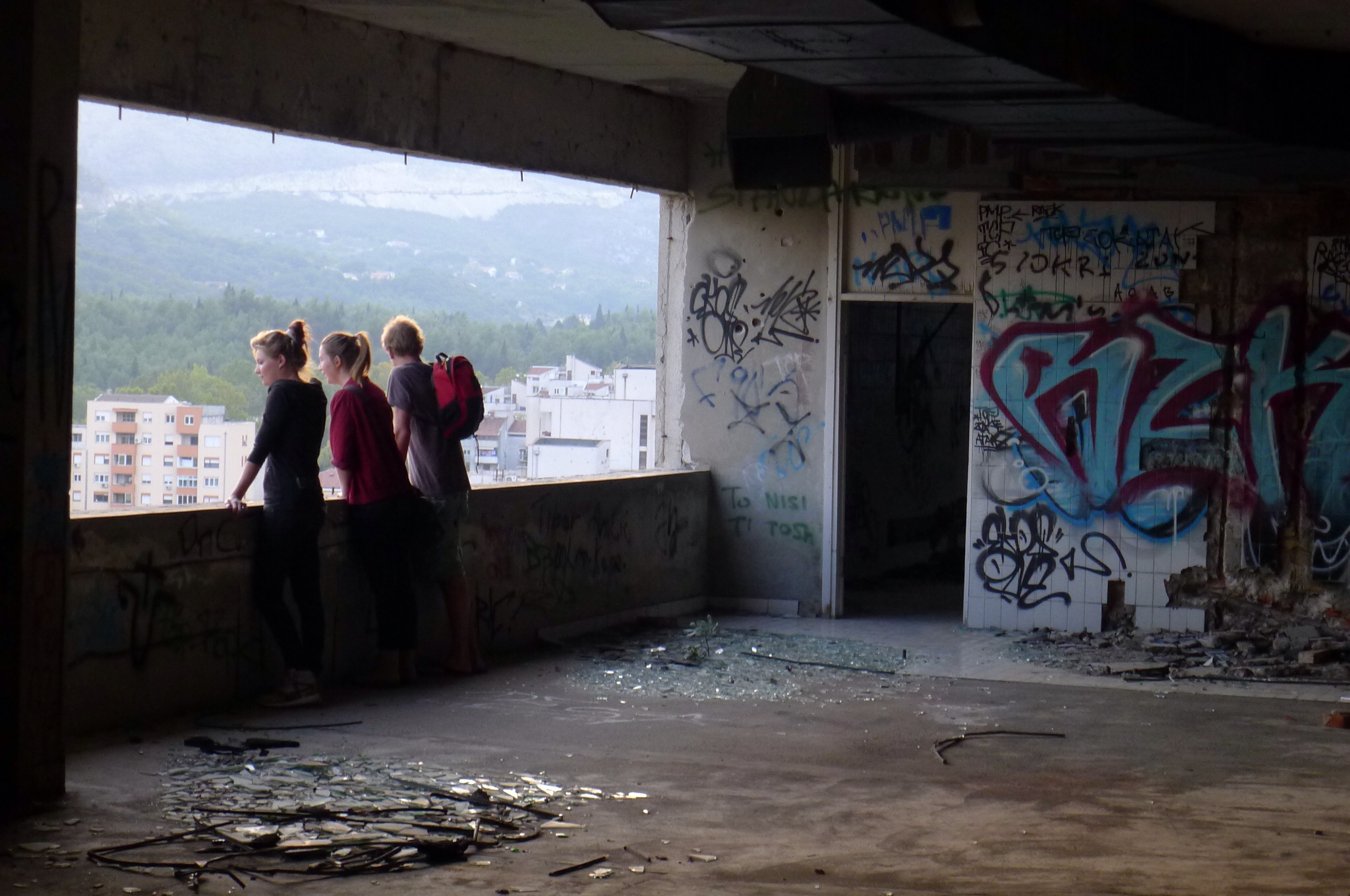(Disclaimer: this is a hotch-potch collection of experience and information we gathered while in Mostar, there is a lot missing – as indicated in the title; it isn't intended as an encyclopaedic entry)
Mostar was recommended to us by our friend Zenna (from Ballingen in NSW) who had visited earlier on her own effervescent European adventure. She recalled that during her first stay, the hostel staff were so surprised and gladdened to have a young visitor remain for so long (five or six nights). They told her if she returned, she could stay for free. This surprise that the staff expressed was probably because Mostar tends to draw large crowds for little time – the city as a tourist destination is transient in nature, with most people only staying a night or two maximum. Once we arrived we were compelled to stay longer than the average visitor by the beauty, explorability and relaxed nature of the town.
Mostar, the 'cultural capital' of Bosnia and Herzegovina, is a place recognisable for its famous (and famously destroyed) bridge, the Stari Most. The city is steeped in rich history – dating back to an ancient Roman occupation and evolving under both Ottoman and Austro-Hungarian Empires. There is much importance to the site, including periods of warfare – World War One, World War Two as well as much more recently, the Bosnian War, during which among other things, Bosnia and Herzegovina declared independence from Yugoslavia. Between 1992 and 1993 there was an 18 month siege in Mostar and an ongoing aftermath until the war ended in 1995. During this period the JNA (Yugoslav People's Army) occupied much of the city. The war mongering was mostly between the JNA and the HVO or the Croatian Defence Council. Much of both sides of the city was destroyed, the Mostari people were murdered, violently raped and forced out of their homes. During the Croat-Bosniak dispute, destruction was absolute for many.
A more positive part of recent Mostar history comes in the rebuilding of the Stari Most and surrounding Mostar. Almost as soon as it was destroyed, a united decision was made to have it rebuilt as soon as humanly possible. Once the war was over, money was donated by a coalition of Spain, The USA, Turkey, Italy, The Netherlands and Croatia. This 15 million dollars was used not only to rebuild the bridge but to restore and rehabilitate the historic neighbourhood of Mostar.
Now, Mostar is a circumstantially apt tourist attraction. Many visitors only pass through on their way to or from Dubrovnik, meaning we walked the streets of not only paved, beautiful lime-stone cobbles but also with the transitory footprints of tourists sauntering their way around.
There are many amazing events in history which replenish any lacking in belief and admiration for our human capacity for true displays of connectedness and of working together.
The rebuilding of the Stari Most carries a lot of importance to the people of Mostar, other than drawing in the necessary money-handling tourists, it signifies the joining of two sides, of two cultures who came together to have it rebuilt. Somehow, when rebuilding such an important monument after war atrocities destroyed it, it didn't matter what your culture or faith was, if you were a Croat from the West or a Bosniak from the East.
Unfortunately though, according to some Mostari youths, the two halves of Mostar (unofficially separated by Aleksa Santic street or the Neretva river), are now back to disliking each other intensely. This could be due to the Dayton peace accords which were signed by Bosnia and Croatia but were not signed by the Croats in Bosnia – meaning war crimes and crimes against humanity are still left without a shared responsibility. It could also be because they feverishly support different football teams. I am not positive about the full details of the current situation, but I do know that the people of Mostar are continuing to work together towards the idea of a unified city with no particular ethnic group in control.
During our time there we spoke with a small number of locals. It was because of their recommendation to Zenna that we climbed the sniper tower (feeling the bristling of tiny hairs on our necks as we did so) – it's not what you know in this life, it's who!
Through these close encounters of the touristic kind, we also learned more about the realities of the city; one man, a tour guide who advertised his services with the claim of complete knowledge of the secret parts of the city, told us there is seventy percent unemployment in Mostar city. We thought surely this figure couldn't be real, and the official rate is indeed documented as much lower than this. Despite this loose numerical discrepancy however, we had the sentiment confirmed by the Mostari resident whose house we stayed in. He said the relatively high number of unemployed people is due to the scarring effect the war had on many minds, leaving them bent beyond repair. The city of a largely ageing population has a majority of families and individuals who lived and survived the atrocities of the war. Despite this Mostar houses nationally competitive universities and a high level of productivity and prosperity.
It is easy to get to Mostar – you can reach it by plane – the international airport is just down the road – you can arrive by train, bus, car or of course, by bike. But even if it weren't easy to access, it is well worth a visit and further research.
A couple of interesting websites we looked at included:
http_www.501places.com_2010_09_sarajevo-mostar-and-the-legacy-of-the-bosnian-war_
http://www.conflictincities.org/mostar.html
http_www.thesun.co.uk_sol_homepage_features_4243451_The-Angel-of-Mostar-returns-to-Bosnia-20-years-after-devastation-of-war
And of course
http_en.wikipedia.org_wiki_Mostar










slighty different geography but worth the listen: http://www.abc.net.au/radionational/programs/360/igo-and-friends/3948440
heart breaking and inspiring stuff..
miss youse
xx
So, Kat, forget teaching, your future as a television presenter is assured. The one thing you’ll have to learn to say is, “It was on this very spot, on the nineteenth of February, 1998, that…” All presenters use this sentence stem.